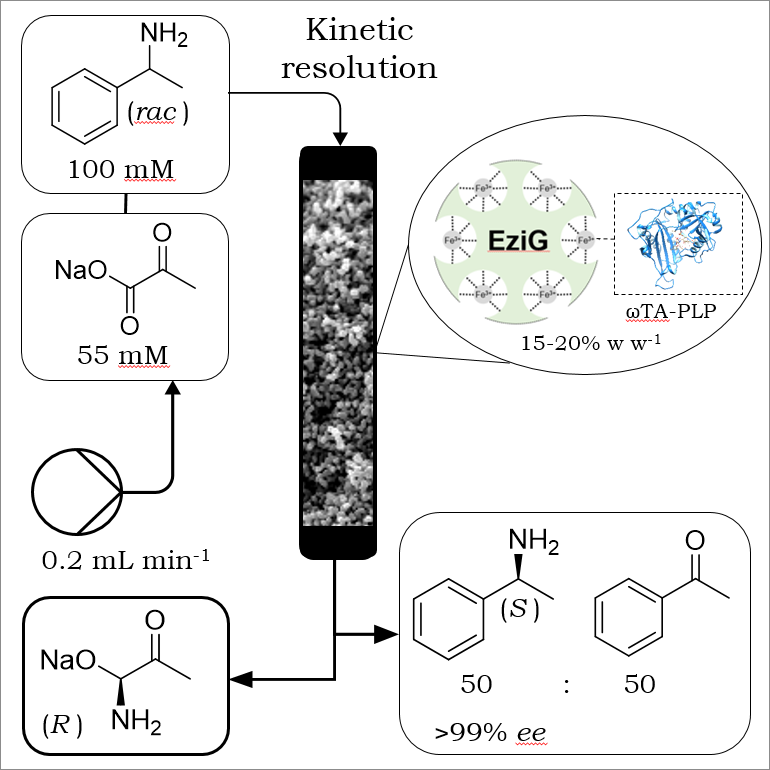
February 2019: Highly efficient production of chiral amines in batch and continuous flow
Continuous flow biocatalysis has become increasingly popular over the past few years because it combines the intrinsic selectivity of enzymes with easy-to-use and scalable flow systems in order to enable the gram-scale production of high-value chemicals. Continuous flow biocatalysis is often performed upon immobilization of isolated enzymes. The main advantages of this approach include recyclability of enzymes along with enhanced stability, chemical selectivity and an increased operational window. In collaboration with the Swedish company EnginZyme AB and the Heterogeneous catalysis group at HIMS-UvA, the HIMS-Biocat group has immobilized two stereocomplementary transaminase enzymes via iron cation affinity binding onto polymer-coated controlled porosity glass beads (EziGTM).
The immobilization procedure was studied with different types of carrier materials and immobilization buffers of varying compositions, concentrations, pHs and cofactor (PLP) concentrations. An important observation was that leaching of the immobilized enzyme was not observed within 3 days of incubation. Both EziG-immobilized transaminases retained elevated activity when tested for the kinetic resolution of a racemic amine in single batch experiments. Recycling studies demonstrated that EziG-immobilized transaminase could be recycled for at least 16 consecutive cycles and always afforded quantitative conversion. Finally, EziG-immobilized transaminase was applied in a continuous flow packed-bed reactor producing several grams of chiral amine in the kinetic resolution process. The calculated space-time yield was 335 grams per liter per hour. Notably, there was no detectable loss of catalytic activity. We believe that this research highlights the potential of continuous flow biocatalysis for industrial manufacturing of high value chemicals.


